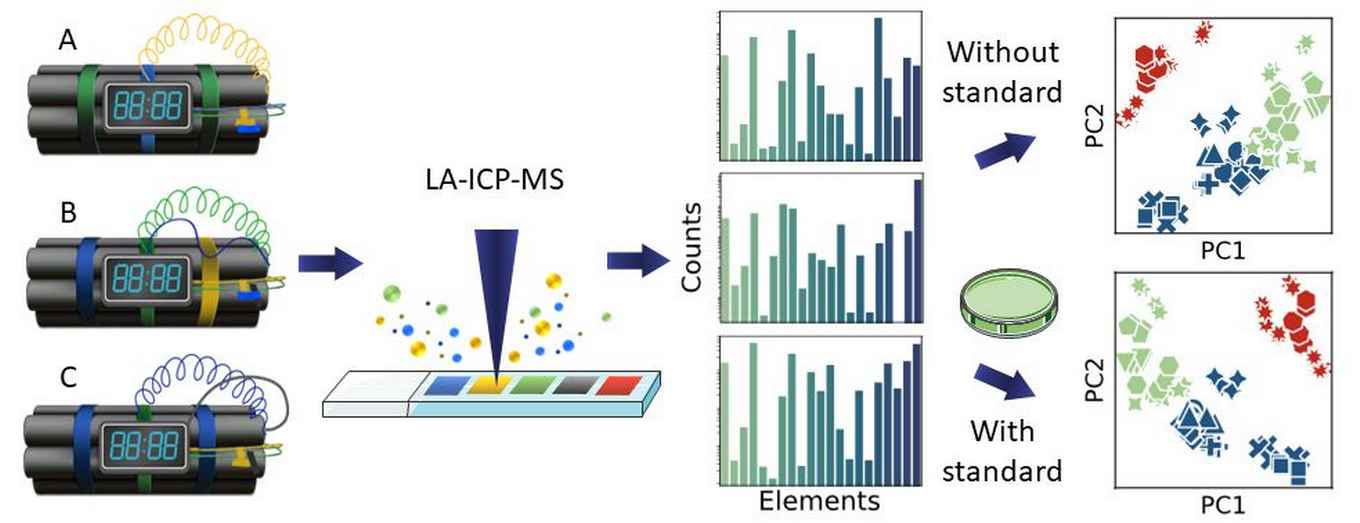Forensic elemental profiling of polymers
9 August 2023

The study shows the feasibility of using the novel standard for the quantitative analysis of chemical attribution signatures of trace elements in polymers by means of LA-ICP-TOF-MS. It significantly improves the classification and forensic comparison of polymer-based evidence.
The research is part of the Forensic Attribution for CWA INtelliGence (FACING) project, a collaboration between the Van 't Hoff Institute for Molecular Sciences (HIMS) of the University of Amsterdam and TNO Defence, Safety & Security. The research was performed at the Netherlands Forensic Institute (NFI). Also involved were the Organisation for the Prohibition of Chemical Weapons and the CLHC Amsterdam Center for Forensic Science and Medicine. The FACING project is financed by the Dutch Ministry of Defence.
Abstract of the paper
Plastic materials are often found on crime scenes in improvised explosive devices. Determining the trace-elemental composition of polymer parts may yield discrimination between samples from different sources. Although quantitative laser ablation-inductively coupled plasma-mass spectrometry (LA-ICP-MS) is well established for forensic glass analysis, the lack of sufficiently reproducible and homogeneous reference standards hampers accurate quantification of trace elements in polymers. Therefore, the present study introduces a new standard for quantitative elemental profiling of polymers. A novel approach was developed for producing polyethylene (PE), polystyrene (PS), and polyvinyl chloride (PVC) standards containing 23 elements at three concentrations. The LA-ICP-TOF-MS measurements showed excellent linear response with R2 > 0.99 for almost all elements and polymer matrices. Additionally, homogeneity was significantly improved to an average of 10% within-, and 17% between-sample variation. PVC and PE matrices presented the best homogeneity which was confirmed by line ablations. The added value of the standards was demonstrated by evaluating a set of realistic forensic polymer evidence items. The between-run variation was substantially reduced from 42% in absence of calibration to 30% when correcting with an elemental internal standard and even to 24% when applying the novel standards. In addition, its discriminating power between different classes was increased, as demonstrated by ANOVA and principal component analysis. In conclusion, this study shows the feasibility of using a novel standard for quantitative analysis of chemical attribution signatures of trace elements in polymers by LA-ICP-TOF-MS. The use of the polymer standards significantly improves classification and forensic comparison of polymer-based evidence.
Paper details
Mirjam de Bruin-Hoegée, Jorien Schoorl, Peter Zoon, Marcel J. van der Schans, Daan Noort, Arian C. van Asten: A novel standard for forensic elemental profiling of polymers by LA-ICP-TOF-MS, Forensic Chemistry, Volume 35, 2023, 100515 DOI: 10.1016/j.forc.2023.100515